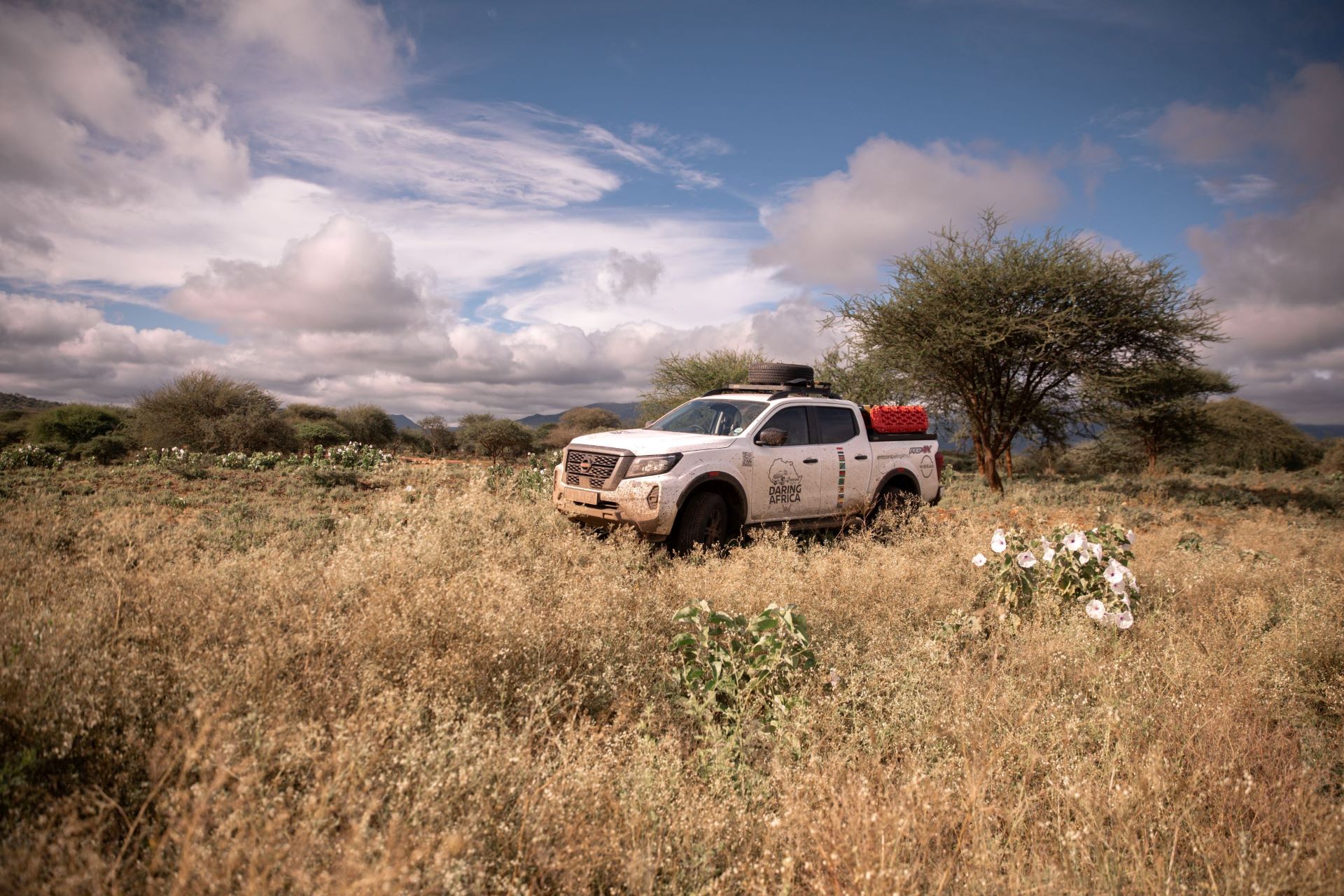Environmental care – a core value
Volvo has over many years committed itself to help maintain a healthy environment and – through renewed and dedicated research and development – contribute to cleaner emissions from its cars that would assist in the effort to curb global warming.
For Volvo Cars it is fundamental that personal mobility should not come at the expense of damaging the environment or other social values. This, and the belief that mobility and care for the environment can be combined, forms the basis for Volvo’s core value of environmental care which was adopted in 1972.
How can Volvo make a difference?
On a global level Volvo’s business goals and sustainability commitments must be compatible with its core values, which include care for the environment. The overriding objective is to develop cars which are both safe and environmentally sound. Limiting carbon dioxide emissions and slowing climate change is a tough challenge, not least for the automotive industry and a company like Volvo Cars.
- Volvo’s first approach to this challenge is to continue to improve today’s petrol and diesel-engine cars and to invest in innovative technologies for the future. (See separate release on Volvo’s DRIVe range).
- The second approach is to offer cars that can be driven on fuels which have a lower net impact on climate, such as Volvo’s broad range of FlexiFuel models that are a common sight on European roads.
- The third is to ensure our production processes are as clean as possible. And Volvo Cars is extremely proud of the fact that since the start of 2008 both the Torslanda factory at Gothenburg in Sweden and the Ghent factory in Belgium – Volvo’s largest – only use electricity from renewable hydro-electric sources.
Ensuring our environmental efforts are sustained
Although Volvo Cars is a relatively small company in the international automotive context, its brand and impact are both global, and it takes its responsibilities very seriously indeed – also on a local level.
- Volvo Cars is working towards a multi-energy society.
Together with a number of researchers, Volvo Cars has in recent years made a study of the options of the future in terms of fuels and energy systems, as seen from a global perspective.
The aim was to examine the most effective ways in which society as a whole should use various fuel alternatives and energy systems, if it is to succeed in managing its energy supply problems while limiting environmental impact.
Starting from this wider perspective, the study went on to investigate the best energy strategy for Volvo Cars. A large number of scenarios were examined, based on a variety of assumptions about the availability and use of different forms of energy, fuel preferences, and overall fuel efficiency for the global vehicle fleet, among many other factors.
The conclusions, in brief, were that Volvo Cars should focus on high-efficiency hybrid electric vehicles, in combination with various carbon-neutral fuel types such as biofuels and solar power.
- This is achieved by including a climate compensation for every 45 000 km of motoring in a Volvo FlexiFuel car. In a car run entirely on E85 fuel (a blend of 85% bio-ethanol and 15% petrol which is widely available in Sweden); the only fossil-fuel carbon emissions are caused by the petrol component of the fuel and the production and distribution of its bio-ethanol component.
- Globally Volvo Cars contributes to the offsetting of CO2 emissions by funding United Nations certified climate-neutral projects such as renewable energy production in China and India.
- Reduced lifecycle impact, 85% recyclable. At present, new Volvo cars are designed to be 85% recyclable, and designed for 95% recoverability. Volvo was the first carmaker to supply Environmental Product Information (EPI) to help the consumer to choose a Volvo model on the basis of its life-cycle environmental performance.
- The Volvo Car Corporation is also involved in a number of environmental projects in partnership with AB Volvo, which produces inter alia trucks, buses and marine engines. These projects range from the Volvo Environment Prize to Volvo Adventure, an environmental competition for young people around the world conducted in collaboration with UNEP (United Nations Environment Programme).
- Clean Energy. In 2009 Swedish energy company, Vattenfall, and the Volvo Car Corporation launched an industrial joint venture partnership to introduce plug-in hybrids on the market by 2012. The ground-breaking technology will considerably lower the environmental impact from traffic and it will be convenient as you can fuel up at home. Fuel costs will also be significantly lower.
- The key, however, is to ensure you’re not simply substituting one form of ’dirty’ energy for another. For that reason Vattenfall will offer customers the opportunity to sign an agreement for renewable electricity sourced specifically from windpower or hydropower, as an alternative to the regular mix of electricity sources.
- For Volvo, this is a major step towards series-producing plug-in hybrid cars. In South Africa there are still many details to iron out because windpower and hydropower are still scarce. But Volvo feels that the answer lies in clean, renewable energy and developing a vehicle that runs completely ‘clean’ is certainly the way forward.
- Local offsetting of emissions – GreenForBlue initiative. In South Africa, Volvo Cars and the paper and pulp producer Sappi have started a joint project to offer Volvo owners’ the chance of minimising their carbon footprint by sponsoring the planting and growing of indigenous trees.
Healthy in-car environment
Offering a healthy in-car environment is also a high priority for Volvo Cars. All of our upholstery materials and interior textiles are tested for certain harmful or allergenic substances and emissions, and meet the requirements of the Öko-Tex Standard 100. Volvo Cars’ advanced Interior Air Quality System (IAQS) reduces the levels of certain harmful gases and particulates. In addition, several of the interior metal components are tested for contact allergies, and actually meet the EU requirements for nickel leakage from jewellery.
With the launch of the S80 in 2006, Volvo introduced its Clean Zone Interior Package (CZIP), a feature developed specifically for allergy-sufferers and for providing a cabin air environment recommended by the Swedish Asthma and Allergy Association. This association also recommends Volvo’s Interior Air Quality System and the Automatic Ventilation feature.
A SUMMARY OF VOLVO CARS’ ENVIRONMENTAL HERITAGE:
-
1945 Volvo introduces remanufactured spare parts – an exchange system still in use
-
1972 UN Global conference on the environment in Stockholm: Volvo raises the critical role of the car in society
-
1976 Three-way catalytic converter with oxygen sensor (Lambdasond®) removes up to 90% of noxious exhaust fumes
-
1982 Torslanda plant begins to use waste heat from local oil refinery
-
1987 Torslanda water treatment plant removes 90% of harmful effluents
-
1989 New, proactive environmental policy
-
1989 Life-cycle assessment using EPS (Environmental Priority Strategies in product design)
-
1989 Volvo demonstrates alcohol power technology: cleanest car tested to date
-
1989 Introduction of internal environmental audits
-
1989 Plastics in Volvo cars marked to facilitate recycling
-
1990 First award of Volvo Environment Prize
-
1991 Volvo Cars first to introduce car free of ozone-depleting chlorofluorocarbons (CFCs)
-
1991 Paintshop at Torslanda plant is world’s cleanest
-
1992 Asbestos eliminated from car production
-
1992 Volvo Environmental Concept Car (ECC)
-
1993 Chlorofluorocarbons (CFCs) no longer used in climate systems of series-produced Volvo cars
-
1994 ECRIS, a new research facility for environmentally optimised dismantling
-
1995 Volvo Bi-Fuel, Volvo Cars’ first generation of methane-driven cars
-
1995 Introduction of standards to improve dealers’ environmental activities
-
1995 Launch of Car & Eco Care, the Volvo Cars range of environmentally labelled car care products
-
1996 Dialogue on the Environment provides environmental training for all employees
-
1996 Introduction of environmental standards for suppliers
-
1998 Introduction of PremAir® – a radiator coating designed to convert harmful ground-level ozone into pure oxygen
-
1998 Volvo Cars is first carmaker to publish environmental product information (EPI) for cars (originally named EPD)
-
1999 IAQS (Interior Air Quality System) introduced for cleaner cabin air
2000 Tailpipe emission control technology from Volvo Cars’ ULEV engines becomes available globally -
2001 New generation of Bi-Fuel cars
-
2002 Volvo Adventure environmental education programme for young people (formerly Volvo Young Environmentalist Award)
-
2002 PZEV engine introduced in California
-
2002 New Volvo cars designed for 85% recyclability
-
2003 Volvo Cars achieves global ISO 14001 certification
-
2004 Introduction of particulate filter for diesel engines
-
2004 Volvo Cars’ new V8 engine is world’s first V8 to comply with ULEV II
-
2004 Volvo 3CC sustainable mobility concept car unveiled
-
2004 Volvo S40 1.6D is first Volvo car with fuel consumption less than 5 l/100 km
-
2005 Bio-ethanol (E85) powered Volvo S40/V50 FlexiFuel launched in Sweden
-
2006 Volvo FlexiFuel launched in eight more markets
-
2007 IAQS & Automatic ventilation recommended by Swedish Asthma & Allergy Association
-
2007 Volvo FlexiFuel offer launched in several more European markets
-
2007 Volvo FlexiFuel offer broadened – 3 models and 5 engines introduced
-
2007 Volvo ReCharge Concept – a plug-in hybrid with 100 km battery range – introduced
-
2008 Volvo uses only green electricity (hydropower) in European manufacturing units


